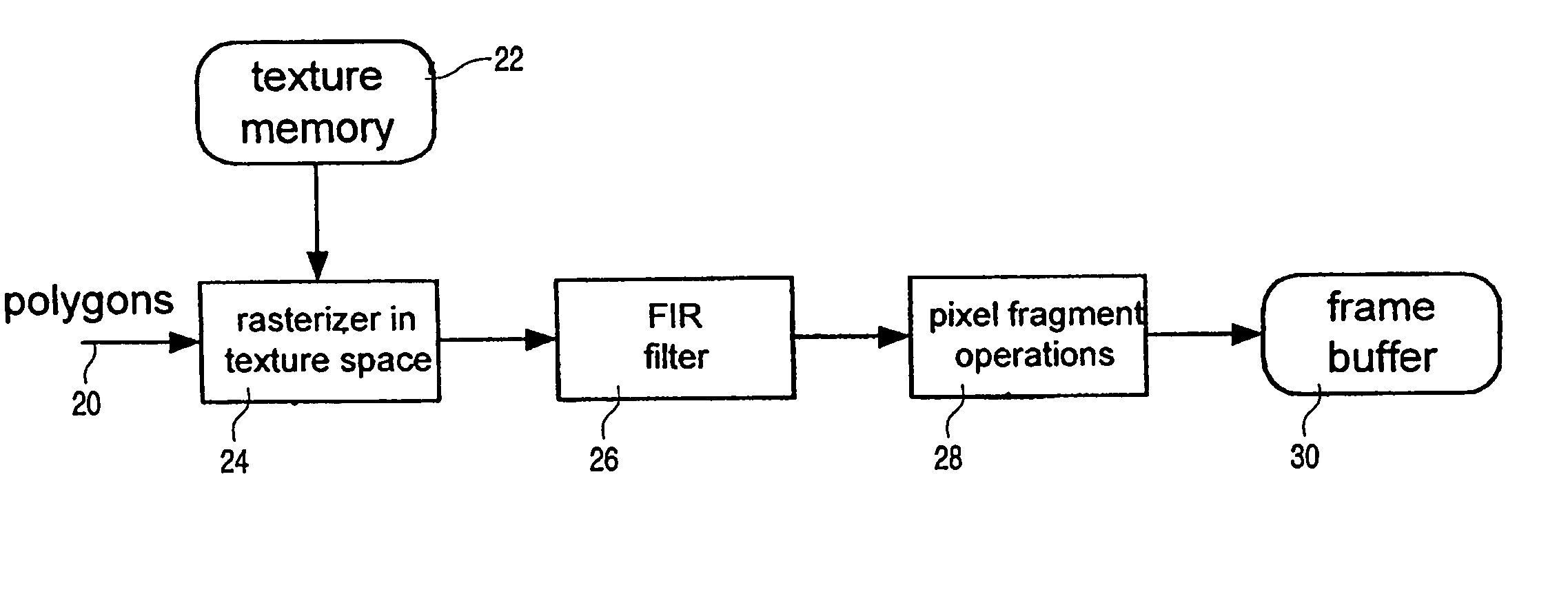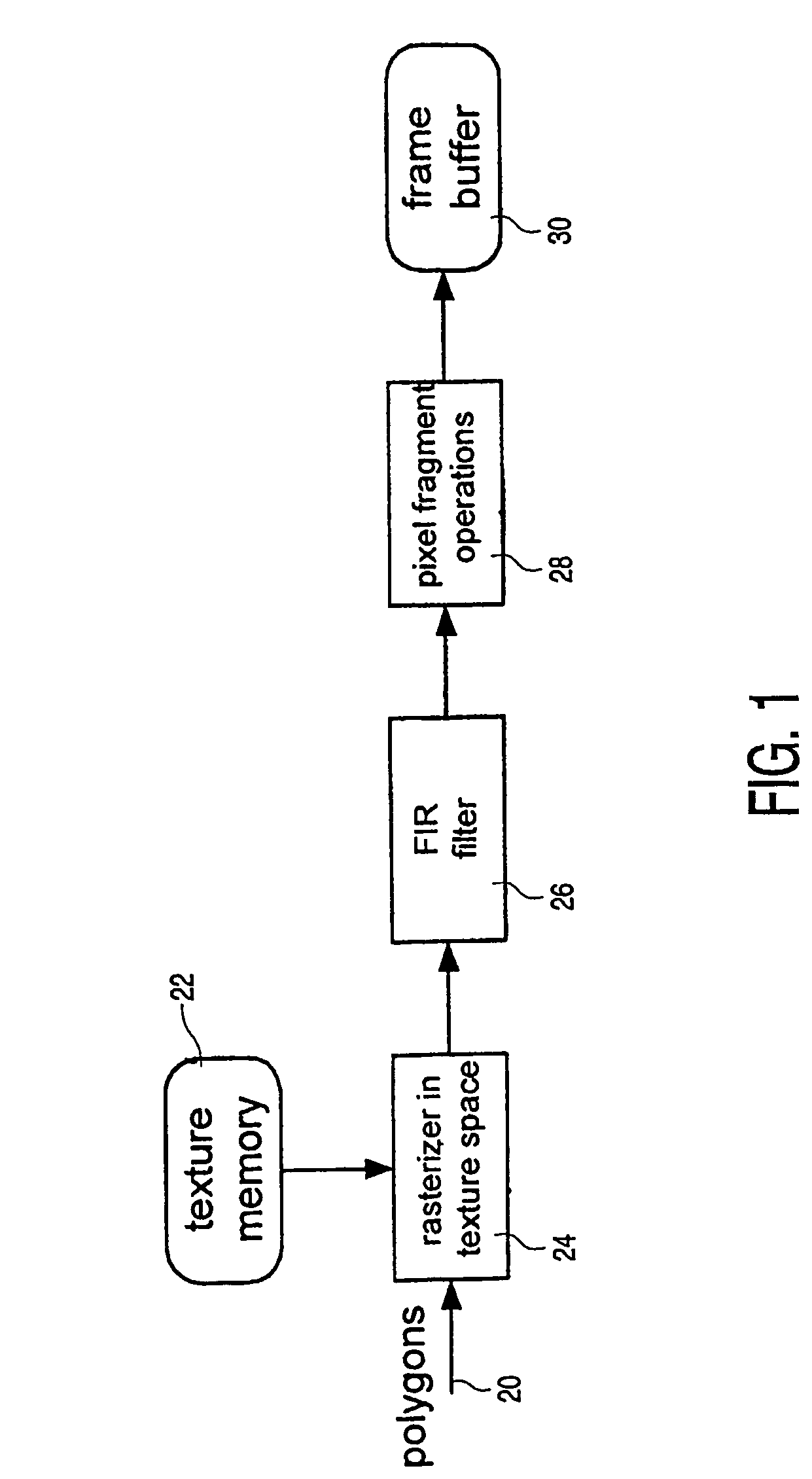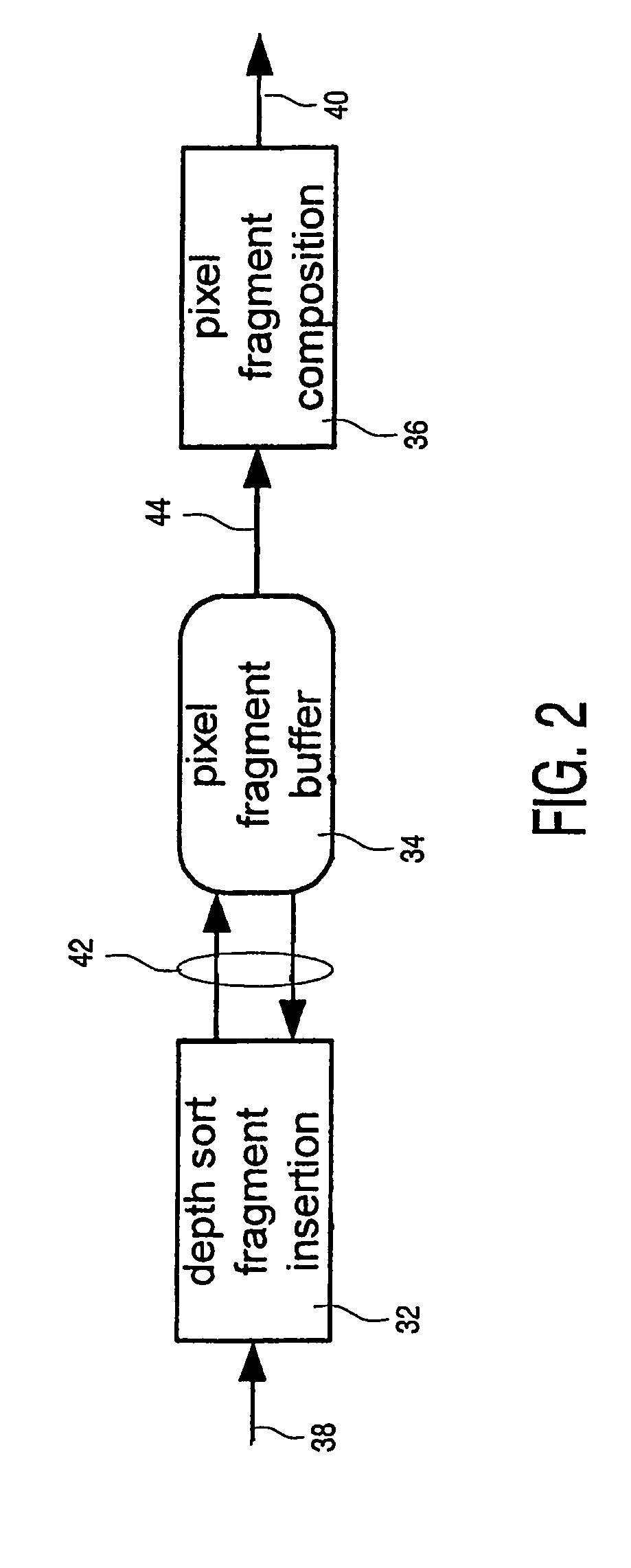Using texture filtering for edge anti-aliasing
- Summary
- Abstract
- Description
- Claims
- Application Information
AI Technical Summary
Benefits of technology
Problems solved by technology
Method used
Image
Examples
Embodiment Construction
[0019]FIG. 1 illustrates a diagram of a backend of an input sample-driven processing pipeline. Herein, the polygon information 20 is inputted at the left hand side into the rasterizer in texture space 24. The generation of such polygon information is by itself state of the art. For the purpose of the rasterizing, a texture memory 22 presents the necessary texture information. After rasterizing, the information is subjected to filtering by a finite impulse response FIR filter 26. After the filtering, the various pixel fragments that have been separately generated in the earlier stages, are now combined in an appropriate manner for producing the eventual information of the screen pixel in question. These pixel fragment operations are executed in block 28. After the combination, the screen image is stored in frame buffer 30 for subsequent usage, such as visual display.
[0020]FIG. 2 illustrates a more detailed view of the situation of the fragment buffer that is part of the pixel fragme...
PUM
 Login to View More
Login to View More Abstract
Description
Claims
Application Information
 Login to View More
Login to View More - R&D
- Intellectual Property
- Life Sciences
- Materials
- Tech Scout
- Unparalleled Data Quality
- Higher Quality Content
- 60% Fewer Hallucinations
Browse by: Latest US Patents, China's latest patents, Technical Efficacy Thesaurus, Application Domain, Technology Topic, Popular Technical Reports.
© 2025 PatSnap. All rights reserved.Legal|Privacy policy|Modern Slavery Act Transparency Statement|Sitemap|About US| Contact US: help@patsnap.com



